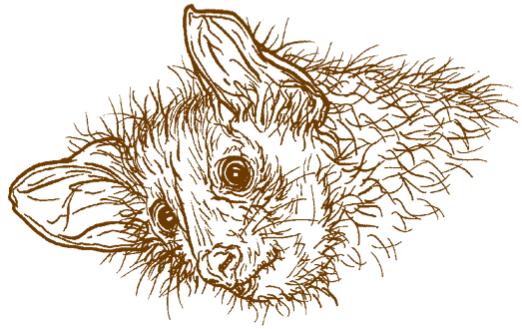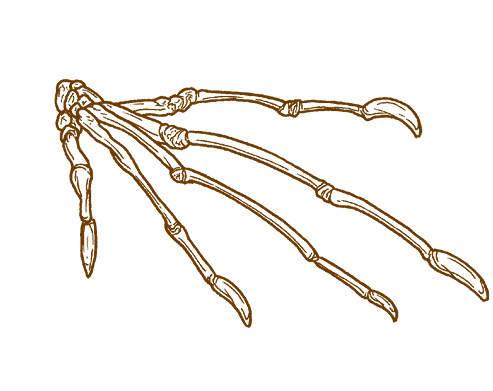
Aye-aye
Daubentonia madagascariensis
(doo-ben-toe-ne-a ma-da-gas-kar-e-en-sis)

Aye-ayes have enormous ears and a piercing gaze. Their front teeth are long and sharp, and they have a strange extended third finger. Ugly as they may be, each of these features serves a purpose.
Since they’re nocturnal, these primates have developed wide-set eyes for clearer vision in the dark. And they use their giant ears in an unusual way when looking for food: They cup them around tree trunks and branches while tapping their elongated fingers quickly against the wood. This way, they’re able to hear where hollow spaces are. Then they use their teeth to gnaw holes in the bark, stretch their long middle fingers into the holes, and pierce grubs and insects with their hook-like nail, dragging them out to eat. This method of finding food is called percussive foraging, and aye-ayes are one of only a few species to use it.

Where They Live
Found along the coasts of Madagascar, the aye-aye likes to live in forests and coconut plantations, as well as in swampy stands of mangroves. During the day, they hide up in the tree canopy, but they’re active at night, spending the safe hours of darkness hunting for food in the treetops.
What They Eat
The aye-aye uses its elongated finger to scoop out nectar and insects from coconuts and trees. Most of their diet is made up of tree cankers (growths on tree bark caused by fungi or bacteria), fruit, nectar, and large quantities of insect larvae, which provide protein and fat.

Close Relations
While these small animals might look like rodents, they’re actually primates and are related to apes and chimpanzees.
Conservation Status
Endangered
According to local superstition in Madagascar, the aye-aye is a sign of bad luck or even death, and many people believe that if one points at you with its long middle finger, you’ll die. Unfortunately, this means that humans are the greatest threat to the aye-aye’s survival. They’re often killed if they’re spotted during the night, then hung by their tails along the roadside so passersby will take the bad luck with them as they leave. Another threat to the aye-aye’s survival is habitat loss, as trees and land are cleared to provide lumber for houses, boats, and other uses.
Fun Facts
